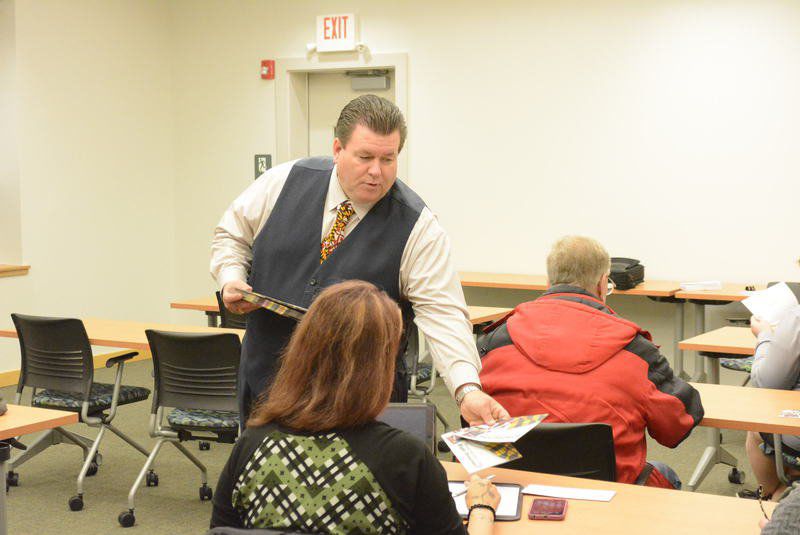CUMBERLAND — Del. Mike McKay said Wednesday the legalization of recreational marijuana is likely to become a top issue in Maryland in the upcoming 2018 election.
McKay met with constituents at the South Cumberland Library on Thursday evening for his annual pre-legislative public meeting. He meets with citizens each year prior to the Maryland General Assembly legislative session which convenes on Jan. 10.
Representing District 1C, McKay serves South Cumberland, eastern Allegany County and western Washington County. He sits on the Appropriations Committee in Annapolis.
“It’s not about the merits, it’s about the election coming up in November 2018,” said McKay. “What I project is that it will be on the ballot. That is how I think it will all shake out. In 2018, we the people will get to pick if we want to (legalize recreational marijuana) or not.”
McKay said he favors seeing how effective the medical marijuana industry is and if it is deemed a success. The sale of medical cannabis by prescription just began this month after a tumultuos four-year rollout in the state.
Citizens also asked McKay about the economic challenges facing the city of Cumberland.
“The city has a housing inventory problem,” said McKay, “meaning there is so many more housing than what our population needs. Therefore you get a depressed value of homes. You end up have a tremendous number of investors coming in buying them sight unseen.”
McKay said that results is more low income rental housing which is “not good for homeownership or home values.”
He said while Cumberland has lost over half of its population since the 1960s, Allegany County, and the greater metropolitan statistical area, has not fallen in population nearly as much.
“When the Kelly (Springfield Co.) and the other industry left the city felt it hard. However, we had 84,000 in the county, we now have 72,000. The overall (county) population hasn’t dropped as dramatically as it has in the city. People are living in West Virginia and Pennsylvania and still use our services. Our school system is stellar.
“Our population hasn’t dropped as much because people are choosing to live in more rural areas outside in the county. It’s hard for the city officials to fix that.”
McKay said the housing inventory must be reduced.
“We need to drop the inventory of homes in the city by 25 percent to give us the property values we need to be able to collect the taxes to pay for the right services.”
Ed Wagner of Cumberland asked if the state is helping with the funding of the urban renewal projects like the Maryland Avenue Redevelopment Project. MARP includes transforming a portion of the city’s Rolling Mill neighborhood into a commercial zone.
“The state is doing its share,” said McKay. “Gov. (Larry) Hogan has made it a priority to invest money in Allegany County, Western Maryland in general, and within in the city of Cumberland.”
McKay said he favors the redevelopment of opportunity sites in the city, such as the Rolling Mill, to be transformed into commercial zones.
“We do need to fill more areas for commercial,” said McKay. “The Maryland Avenue (Redevelopment Project), whether you like the way it came out or not, it is the right thing to do to take certain parts of the city and change the taxable base. A commercial base will actually bring up a higher (taxable) value.”
credit:times-news.com


